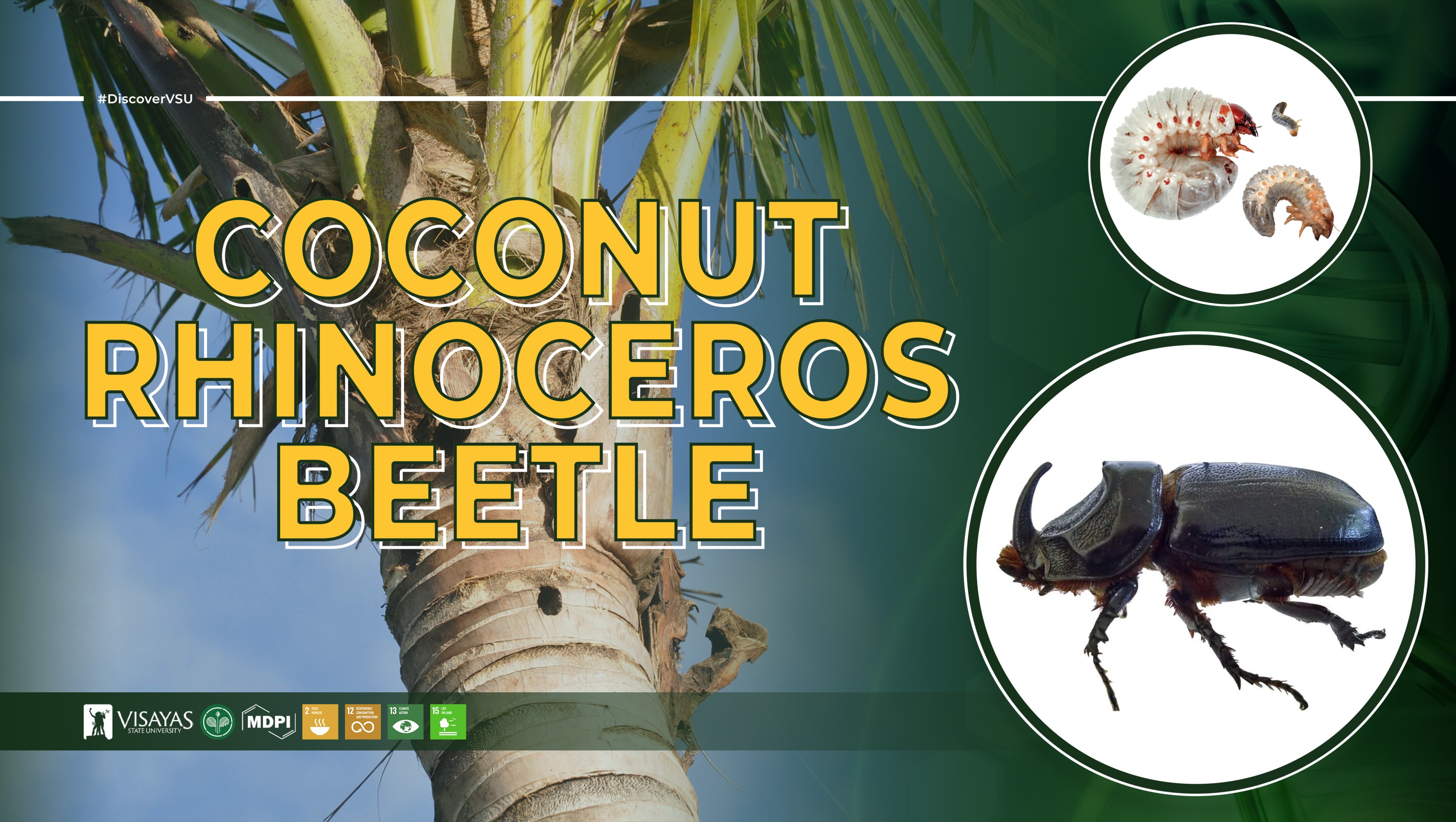#DiscoverWithVSU: Tracing the true origins of a coconut pest threat
- Details
- Written by Mike Laurence V. Lumen
-
Published: 16 October 2025

A new international study has shed light on one of the most pressing threats to coconut across the Pacific—the coconut rhinoceros beetle (CRB).
For years, scientists thought that the Nudivirus-resistant scarab beetles spreading from Guam, also called the CRB-Guam or CRB-G Biotype, were the source of infestations in nearby islands like Palau and the Solomon Islands. However, through fresh analysis of the beetle’s mitogenome across multiple coconut-growing countries in the Pacific, researchers discovered that the Guam population is genetically distinct. This means that the beetles attacking Palau and the Solomon Islands did not come from Guam as earlier believed.
The study, published in the journal Diversity (MDPI), was led by Australian researchers and co-authored by Dr. Justine Bennette H. Millado from the Visayas State University-Department of Pest Management (VSU-DPM). Her involvement places VSU at the center of a global scientific effort to better understand and contain this invasive insect.
CRB bores into the crown of coconut trees that damage the developing apical meristem, stunting growth. Severe manifestations can significantly reduce yields or even kill young palms. In countries where coconuts are not only a source of food but are also a backbone of rural economies, the impact is far-reaching.
By studying the beetle’s mitochondrial DNA, the tiny structures inside cells that carry inherited genetic information, the researchers were able to compare populations across different islands within the beetle’s native and non-native range.
They found that while Guam beetles have one uniform DNA pattern, beetles from the Philippines, Palau, and the Solomon Islands carry different patterns. This means new outbreaks in those countries came from other sources besides Guam, or were caused by other factors.
The team developed new genetic markers derived from new reference mitochondrial genes ATP synthase membrane subunit 6 (ATP6) and Cytochrome Oxidase III (COIII) that are more specific to the ‘true CRB-Guam biotype’than the older method using the usual Cytochrome Oxidase I (COI) marker. With these markers, pest control agencies can now track the true origin of an outbreak and tailor their responses more effectively.
For farmers and communities, this means quicker identification of invading beetle populations, smarter quarantine actions, and potentially saving thousands of coconut trees from destruction.
With coconut farming deeply tied to the livelihood of many Filipino families, having one of the VSU scientists contribute to international studies ensures that local experiences and concerns are part of the global discussion.
The study also strengthens regional cooperation, as specimens from the Philippines were collected under permits facilitated by and gut samples were pre-processed via VSU Internationalization projects.
This not only puts VSU on the map of advanced agricultural research but also shows how local universities can directly influence solutions to cross-border agricultural problems.
For coconut farmers in Leyte and beyond, the research offers hope that better pest monitoring systems are on the horizon. In the long run, this helps protect livelihoods, secure harvests, and safeguard one of the Philippine's most iconic crops.
This article is aligned with the Sustainable Development Goal (SDG) 2: Zero Hunger; SDG 12: Responsible Consumption and Production; SDG 13: Climate Action, and; SDG 15: Life on Land.

